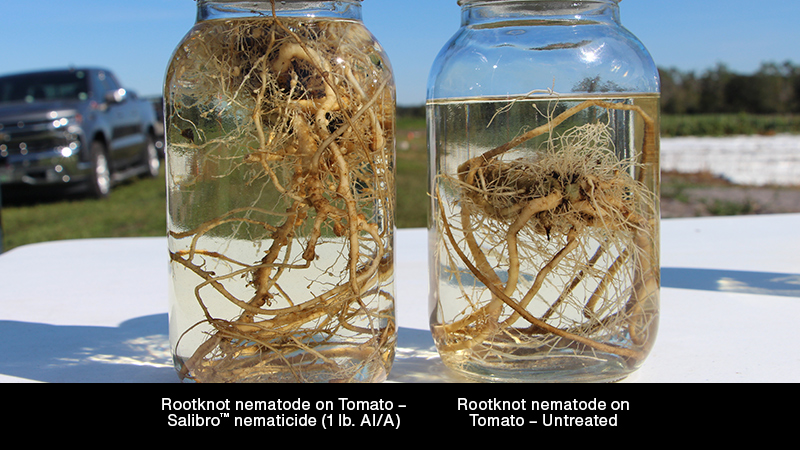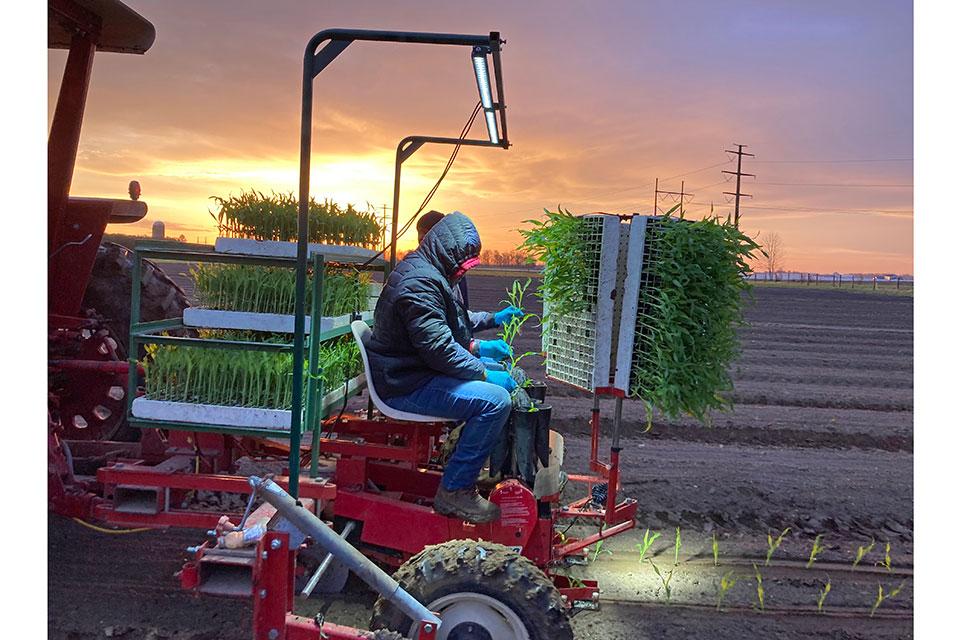Battling Bacterial Blight In Blueberries
Editor’s Note: The Jan. 3, 2013 issue of the “Small Fruit Update”, published by Peerbolt Crop Management in Portland, OR, featured an in-depth look at bacterial blight in blueberries. This article is a compilation of some of the highlights of that report. Much of the information comes from Joyce Loper with the USDA-ARS Horticultural Crops Research Lab in Corvallis, OR, and Virginia Stockwell in the Department of Botany and Plant Pathology at Oregon State University.
In recent years, a lot of copper has been applied to Pacific Northwest blueberry fields for control of Pseudomonas syringae (bacterial canker), even though there is strong evidence that copper is not an effective control for most strains of the disease. Unlike some plants, there are many strains of this disease that cause damage in blueberries, which makes management increasingly difficult.
There are no other proven alternatives to copper for managing the disease. Pruning out and removing infected plant material can be effective, but is economic only under very specific situations, such as a small field or a particularly vulnerable cultivar.
Blueberry cultivars have varying degrees of susceptibility to P. syringae, and new data have given better protocols for determining this. There is now a better understanding of the timing of when blueberries are vulnerable to P. syringae infection, which can lead to better timed application of management materials. A lot of money and resources are being used in an ineffective way to minimize damage from this disease. We need a better understanding of how to best use what tools we have and to invest in finding better management alternatives.
The Basics Of Bacterial Blight
Economic damage from bacterial blight is caused in two ways:
1) The various strains of the bacteria itself have varying degrees of toxicity.
2) This is an “ice-nucleating” bacterium. Water in infected cells freezes at a higher temperature than the water in uninfected cells so that infected cells will be damaged at temperatures above normal freezing conditions.
Young plants are particularly susceptible to major damage due to more vigorous, soft growth and a reliance on thin, young canes that can be girdled and killed by the disease’s lesions.
Identification/Symptoms
• Tissue infected in the fall or early winter can show no symptoms until the late winter/early spring when water-soaked lesions appear on one-year-old canes/branches in January or February.
• These lesions develop into reddish-brown to black, irregularly shaped cankers with defined margins.
• Cankers can extend from a fraction of an inch to the entire length of the stem and sometimes girdle stems.
• In the late winter/early spring, as temperatures warm and the buds swell, plants become more vulnerable to new infections.
• Once buds or other tissue are infected, they are much more likely to be damaged by any cold temperature events that occur after bud swell.
Disease Cycle
• The bacterium survives and multiplies on the surface of buds, bark, and stem, but is incapable of causing damage until it permeates the tissue.
• Entry is through wounds, pruning cuts, and/or natural openings, such as leaf scars, and probably through frost or winter-injured tissues as well.
• P. syringae bacteria are almost universally present and spread easily by wind, rain, and many other means.
Management Factors
• There is a strong correlation between damage symptoms and cold temperature events in the spring. While tissue can be infected, if the temperatures remain above the level where ice would form in that tissue, there can be little or no actual damage from the infection.
• Avoid over-fertilization and late-season fertilization, especially on new plantings, as this creates an overabundance of highly susceptible growth.
• Newly swelling buds are highly vulnerable to infection.
Timing Of Material Applications
• There appears to be no research evidence that suggests fall applications are effective in blueberries (Editor’s Note: see the comment at the end of this story for clarification of an inaccuracy found here; that’s one advantage of the Web, that it allows for instant feedback and correction!). Original recommendations for fall applications in blueberries were based on work done in other crops like cherries. Subsequent research trials in blueberries have not shown any measurable effect.
• In conversations with researchers, fieldmen, and growers, there seems to be a consensus that applications during dry weather windows in February are ideal. This is when buds are close to or beginning to swell. Subsequent rains can spread the bacteria to this tissue and subsequent cold can increase the damage to any tissue that does get infected.
• Application timing goals are to prevent infections by protecting vulnerable tissue throughout the window of time when temperatures can drop into the range that ice can form in any infected tissue.
Treatment Material Options
• Copper products. While copper is the standard material used, quite a few other materials have been used/evaluated. None of the other options have yet shown reliable disease suppression. Grower reports of their usefulness are inconsistent at best. There is a need for more work to determine whether any of them (or other options) could be of economic benefit in an overall Pseudomonas management program.
• Serenade Max (Bacillus subtilis, AgraQuest). In some trials, Serenade Max has shown efficacy against bacterial blight. In other trials it hasn’t. Given the right timing and conditions, it could be useful. The problem is knowing when and what those conditions are.
• BlightBan A506 (Pseudomonas fluorescens, Nufarm) competes with P. syringae to colonize plant tissues and suppress the damaging bacteria. In theory, it could reduce frost damage caused by this disease. Trial results are very mixed. Copper can’t be used with this product because it kills the active ingredient.









